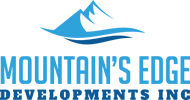BRRR: A Real Estate Investing Strategy
Yup, we’re doing it. We’re recycling one of our favourite summer posts! Why? Who doesn’t love frozen treats at this time of year?!
How about an intellectual popsicle on this gorgeous weekend? You’ve heard of fix and flip, you’ve heard of buy-and-hold, you’ve heard of multifamily—but do you know about the BRRR strategy for investing in real estate?
BRRR stands for Buy-Renovate-Rent-Refinance. The main premise of the strategy is about forcing appreciation.
Buy: In this strategy, the investor buys a property below market value AND a property that needs some repairs. Because Calgary continues to have highly motivated sellers, this is very possible. The first challenge is to buy a fixer-upper, versus a complete money-pit; the second challenge is to buy a fixer upper in a community that already has some gentrification—and can already support a higher-valued house once it is “Runway Ready.” This is where a good partnership comes in! When you work with experienced contractors and inspectors, they can steer you away from what looks like a great deal, but in reality needs a TON of work. And when you work with great realtors—they can narrow down your search to a few ideal neighbourhoods. In case you missed it: the BUY is critical in this investing strategy.
Renovate: You will not live in this house! It is an investment property. When you know your client for that neighbourhood, the goal here is to renovate to that standard. Get your permits, fix the repairs, then make it “pretty.” You want the best client for that neighbourhood, and the best market rents for that area. With a good Joint Venture partner, you can set your renovation budget, then all the finishing decisions (tile, paint, plumbing, lighting) can be left to the partner and within the budget. Note: a contingency budget is wise here; during the renovation it is possible to find extras that need repairing. Speed is your friend with the BRRR strategy. The more efficient your team is, the less time that house sits vacant, and the lower your carrying costs.
Rent: Stage the home, mow the lawn, and market to your ideal tenant. Of course you or your JV partner will do all of your regular tenant screening before signing a lease. As a bonus here, you should have lower Repairs and Maintenance expenses for the first few tenant years—because you just fixed things or bought them new, and some will be under warranty.
Refinance: This is where the magic comes in! Let’s use real numbers to make it easier to follow; we will also use nice round numbers. For example, you buy a house in Calgary for $300,000. It’s about 30 years old and all the finishings are original (you’ve seen those golden oak specials?). The seller has recently replaced the roof, the furnace, and the windows. The hot water tank was replaced 3 years ago. Now the seller has a job transfer and needs to move by Sept 1. You get a good deal because you can look beyond the “outdated” appearance, and you can close quickly. You set a budget for $80,000 for the reno’s—yikes there was a lot to do at this house! Maybe your budget even includes adding a legal secondary suite (our personal favourite). During the reno, a few issues arise and you need to do a few extra repairs for a total of $20,000. Now your reno total is $100,000. The finished product is marketed and rented to tenants and you have a 1 year lease (or two leases: one for each suite). Next you go to the bank (or mortgage broker) to see if you can refinance the property. The bank appraises the home at $500,000. They will give you financing for 80% LTV (loan to value, which is $400,000). They may even use some of the rental income towards your overall income to qualify on the property.
Did you catch all that? With renovations and the house purchase, you were “all in” for $400,000. At the refinance, you received ALL of your investment capital back (less some of your closing costs, for those of you watching every penny). AND you still own the asset! Obviously, these numbers are the ideal target for this strategy, and not every deal works out perfectly. But what if you could refinance and only leave $25,000 in the investment property—and still have a cash-flowing asset? I know some of you are already calculating your ROI!! Smiling about Cash-on-Cash returns after that first year?
And for those of you who love to plan for the “what if’s”:
- Yes, COVID is still very real. No one can predict what might happen in the next month, nevermind the next 6 or 12 months.
- Yes, we love to have alternate exit strategies! Currently, we evaluate each strategy at the start, and again when the project is complete—some markets are changing that fast.
Contact us at any time to discuss your goals, and our projects and opportunities: @MtnEdgeRenovate, @MtnEdgeDevelops, https://mountainsedgerenovations.com/, https://mountainsedgedevelopments.com/. In the meantime, enjoy your summer weekends!


